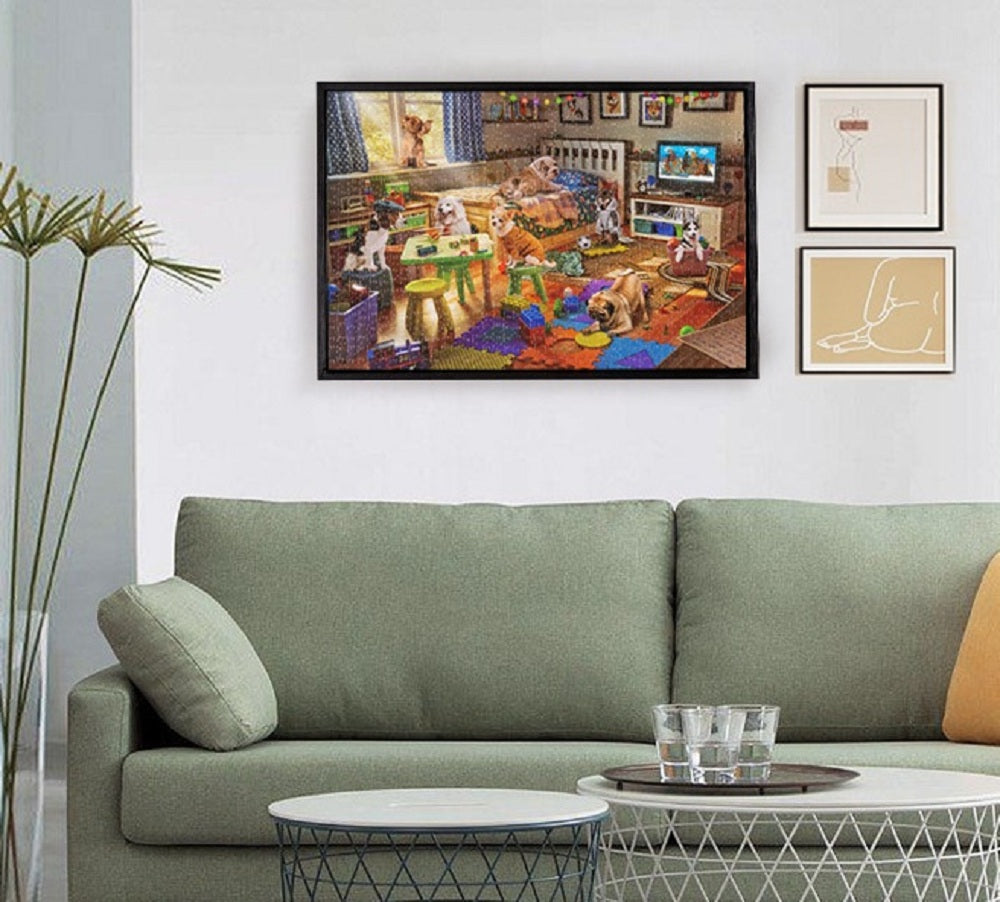
How to Use Peel and Stick Puzzle Saver: A Comprehensive Guide
Welcome to our comprehensive guide on how to use the Peel and Paste Jigsaw Preservation Program! If you're an avid jigsaw puzzle enthusiast, you know the immense joy and satisfaction that comes from completing beautifully crafted jigsaw puzzles. However, after spending hours putting everything together, you may be wondering how to preserve your masterpiece. That's where the Peel and Stick Jigsaw Puzzle Protector comes to the rescue!
Peel and Stick Puzzle Savers are specially designed adhesive films that allow you to permanently preserve your finished puzzles, ensuring that they remain intact and display-worthy. In this article, we'll delve into the step-by-step process of using peel-and-stick puzzle protectors effectively, as well as valuable tips and tricks to ensure perfect results.
So, if you're ready to display your completed puzzles as stunning wall art or thoughtful gifts, let's delve deeper into the world of peel-and-stick puzzle protectors!
How to Use Peel & Stick Jigsaw Savers
Understanding Peel & Stick Puzzle Saver
Before we get started with the application, let's get a better understanding of what Peel & Stick Jigsaw Saver is. This self-adhesive film is usually made of high-quality transparent material that adheres securely to the front surface of the completed puzzle. Its main purpose is to hold all the puzzle pieces together and protect them from damage, allowing you to easily frame and display the puzzle.
Step-by-step guide to applying Peel & Stick Jigsaw Saver

For best results, follow the step-by-step instructions below when applying Peel & Stick Jigsaw Saver to a completed jigsaw puzzle:
Prepare your workspace
Find a clean, flat surface to work on. Make sure it is large enough to hold your puzzle and that there are no pieces hanging over the edges.
Lay a soft cloth or felt pad on the surface to protect the puzzle from scratches and dust.
Turning the Puzzle
Carefully flip the completed puzzle onto the soft cloth/mat so that the front (puzzle image) is facing down.
Trimming the puzzle saver
Unfold the peel-and-stick puzzle saver and place it on the back of the puzzle.
Use a pair of sharp scissors to trim the film to fit the exact size of the puzzle.
Peeling off the backing
Gently peel off a few inches of backing from one end of the film. Avoid touching the adhesive surface with your fingers to keep it tacky.
Begin laminating the film
Align the exposed adhesive end of the film with one edge of the back side of the puzzle.
Gradually place the film on the back of the puzzle, blotting as you go to prevent air bubbles.
Continuing application
Peel off the backing little by little while applying the film to the back of the puzzle, smoothing it to avoid creases.
Removing air bubbles
If you notice air bubbles between the jigsaw and the film, gently lift the film and reapply, smoothing it out as you go.
Sealing the Edges
After applying the entire film, press down firmly on the edges to seal them securely.
Trimming excess film
Use scissors or a hobby knife to trim excess film from the edges of the puzzle for a clean surface.
Letting it Set
Allow the puzzle to set for at least 24 hours to ensure the adhesive sets properly.
Tips for the Perfect Puzzle Saver
- Work slowly and carefully to avoid wrinkles and bubbles.
- Use a rolling pin or flat object to smooth the film during application.
- If the puzzle has loose pieces, use puzzle adhesive to secure them before applying the film.
Frequently Asked Questions (FAQ)
Can I use Peel & Stick Jigsaw Saver on all types of jigsaw puzzles?
Yes, Peel & Stick Jigsaw Saver works on most types of jigsaw puzzles, including cardboard and wooden jigsaw puzzles.
Is Peel & Stick Jigsaw Saver permanent?
Yes, once applied, the Jigsaw Saver is designed to be permanent, ensuring that your jigsaw puzzle remains intact.
Can I add frames to my puzzle after using Peel & Stick Jigsaw Saver?
Absolutely! Peel & Stick Jigsaw Saver allows you to easily frame your saved jigsaw puzzles.
Can I use Peel & Stick Jigsaw Puzzle Saver on a puzzle with missing pieces?
It is not recommended to use the Peel & Stick Jigsaw Saver on jigsaw puzzles with missing pieces as it may not hold them together securely.
Can I reposition the puzzle after applying the Jigsaw Saver?
No. The adhesive is designed to be permanent, so it must be carefully applied all at once.
Can I apply Peel & Stick Jigsaw Protector to both sides of the puzzle?
No. It is best to apply the film to the back of the puzzle only, as it may detract from the appearance of the front.
Conclusion
Using Peel & Stick Jigsaw Savr is a great way to preserve your hard work and cherish the memories of completing a challenging jigsaw puzzle. With its simple application and long-lasting results, you can proudly display your puzzle masterpiece in the future. Remember to follow the step-by-step guide and helpful tips provided in this article for perfect and professional results.So, why wait? Gather your completed puzzles, grab some peel-and-stick puzzle protectors, and turn your cherished pieces into beautiful wall art or thoughtful gifts! Happy puzzling and preserving!
